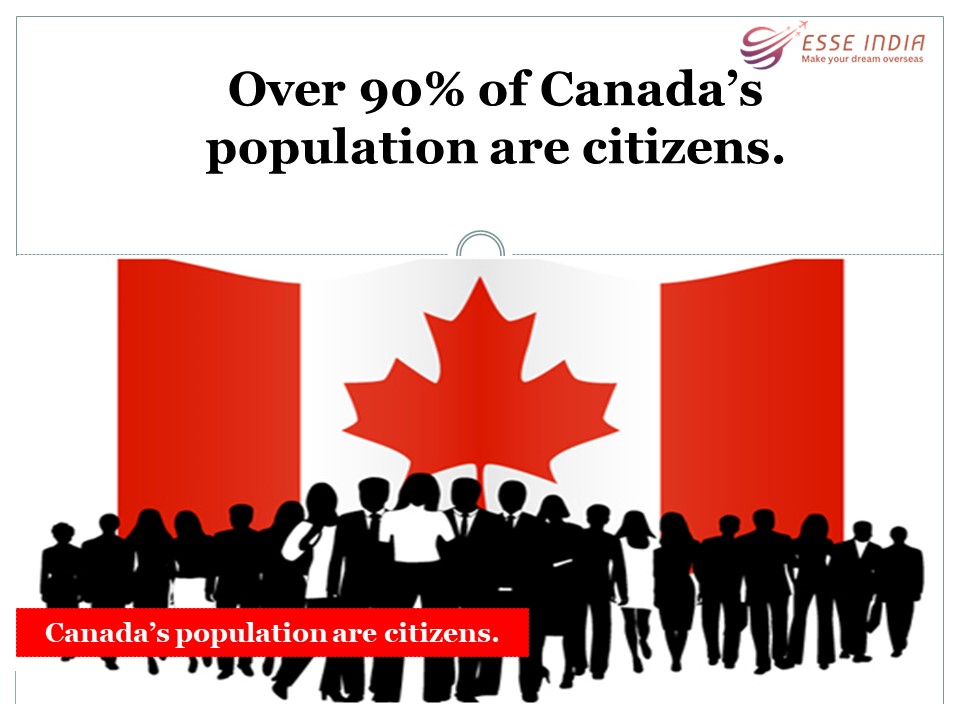Over 90% of Canada’s population are citizens. - PowerPoint PPT Presentation
Title:
Over 90% of Canada’s population are citizens.
Description:
Statistics Canada’s recent census reveals some key insights into the path to, and trends surrounding obtaining Canadian citizenship for immigrants. – PowerPoint PPT presentation
Number of Views:8
Title: Over 90% of Canada’s population are citizens.
1
Over 90 of Canadas population are citizens.
Canadas population are citizens.
2
Statistics Canadas recent census reveals some
key insights into the path to, and trends
surrounding obtaining Canadian citizenship for
immigrants.
3
Canada at a glance
- The main report on citizenship A portrait of
citizenship in Canada from the 2021
censusrevealed that out of a population of 33.1
million in Canada, the majority (91.2)
were citizens, either by birth or
by naturalization. Citizenship by naturalization
(the path for immigrants) occurs when a former
non-Canadian resident of Canada, eventually
becomes eligible and earns the legal status of a
citizen. - The remaining 8.8 of the population were
non-Canadian (either permanent residents or tempor
ary residents).
4
Moving from non-Canadian to Citizen
- In 2021, four out of five (80 of) eligible immigr
ants had obtained Canadian citizenship. the
naturalization rate (percentage of eligible
immigrants who have obtained Canadian
citizenship) has dropped from 87.8 in 2011. - This drop in the naturalization rate is a key
concern for the government and is likely
exaggerated by certain policy changes that Canada
has already moved to correct. For example
5
- correct. For example
- Physical presence requirements for naturalization
changed between 2015 and 2017, increasing from
three to four years, and with no ability for
applicants to claim time spent as temporary
residents. After changes to the Citizenship Act
in 2017, this requirement returned to three
years, with applicants once more able to claim
time spent in Canada as temporary residents and - The fee to apply for a citizenship
grant increased in 2015 (currently it is 630
CAD). The Liberal government had promised in late
2019 that they would waive these fees, to reduce
the financial burden on lower-income households
while they are yet to follow through on this
promise, it is likely that once fees are waived
more lower-income households will be eligible for
naturalization.
6
The natural move to citizenship
- While the last ten years have seen a decline in
the rate of naturalization, they do similarly
show that as time increased in the country,
people were increasingly likely to pursue
citizenship. - For example, of immigrants admitted to Canada
before 2001, 94 had obtained Canadian
citizenship by 2021. Comparatively, of immigrants
admitted from 2011-2015, little more than half
had obtained citizenship. - These findings suggest that there is a natural
process by which more and more people from each
immigrant cohort pursue and/or become eligible
for Canadian citizenship as time passes.
7
The need for non-citizens
- One of the key findings from the study was that
while the median age of Canadian citizens was
41.2 years of age, the median age of non-Canadian
citizens living in Canada (temporary or permanent
residents) was 33.6 years. - This is a crucial discovery that is in line with
Canadas immigration aims, as in the face of an
aging population and low birth rate, Canada will
look to address labour shortages and market needs
through immigration.
8
Where will the Canadians of tomorrow hail from?
- Among both permanent residents and temporary
residents, the most reported citizenship
was Indian, accounting for more than a quarter of
all temporary residents. - Roughly one in ten permanent and temporary
residents reported Chinese citizenship with the
Philippines trailing close behind in terms of
permanent residents.
9
- The third most common nationality among
non-permanent residents was French. - These findings make it increasingly clear that
Asia will continue to be a key source region of
not just immigrants, but also future Canadian
citizens. - Additionally, the increasing number of
non-permanent residents who were French meets the
policy aims of both the Quebec and federal
governments, who will be looking to
increase Francophone immigration across Canada.
10
Key takeaways
- Immigration remains a key concern for Canada, and
the gradual lowering of the naturalization rate
will likely be a focal point for the federal
government and Immigration Refugees and
Citizenship Canada (IRCC) moving forward
especially as the median age of non-Canadians in
Canada is within prime working ages. - This being said, Canadas high quality of life
continues to guarantee strong rates of
immigration and immigrant retention, meaning that
even if the naturalization rate is low, Canada is
still likely to have high rates of new immigrants
and permanent residents every year (as evidenced
by targets within the new Immigration Levels Plan.
11
THANK YOU































